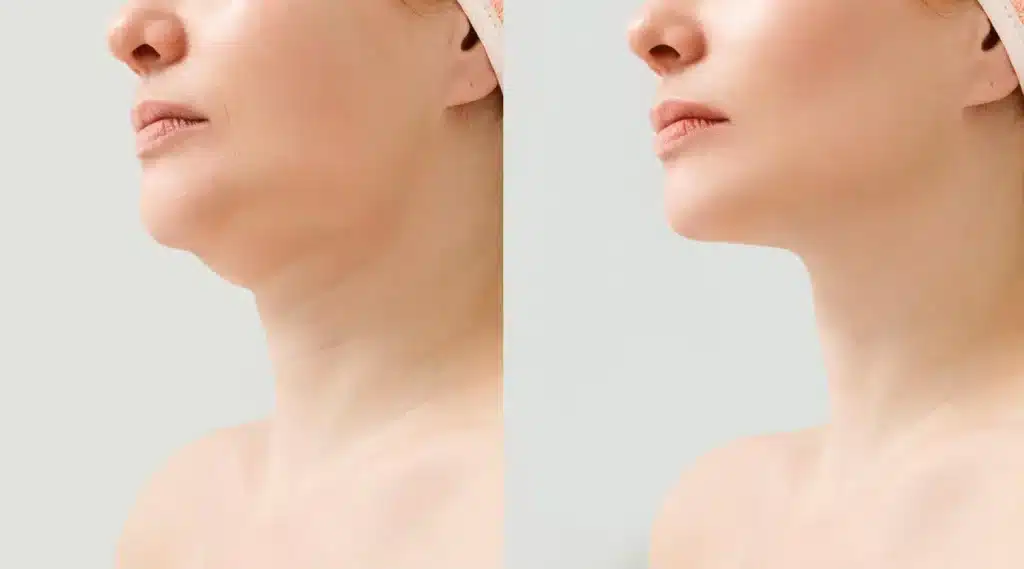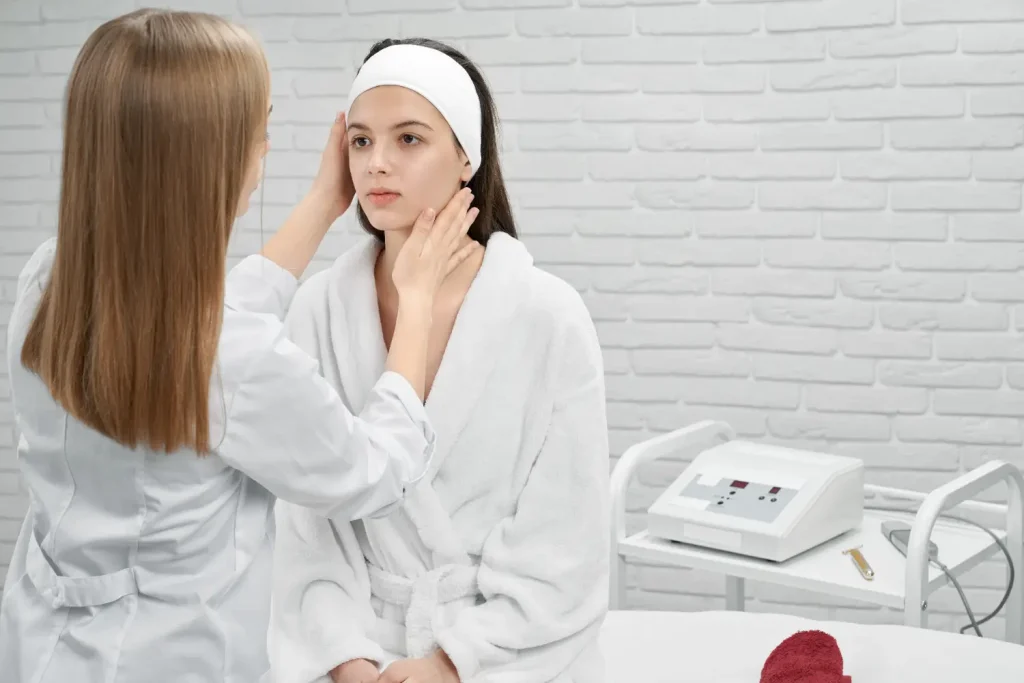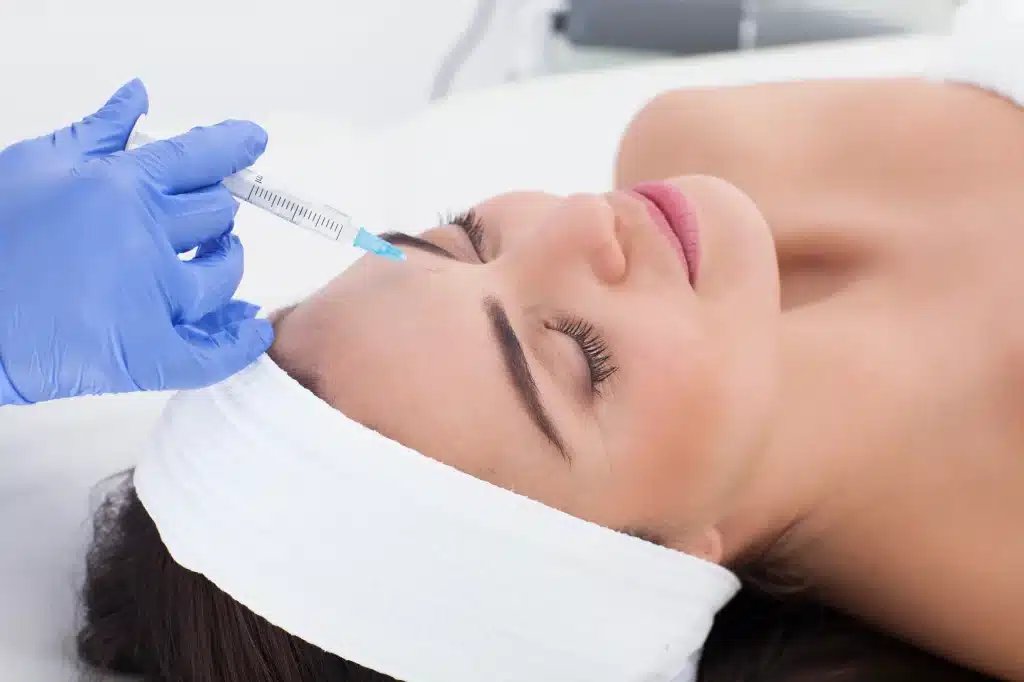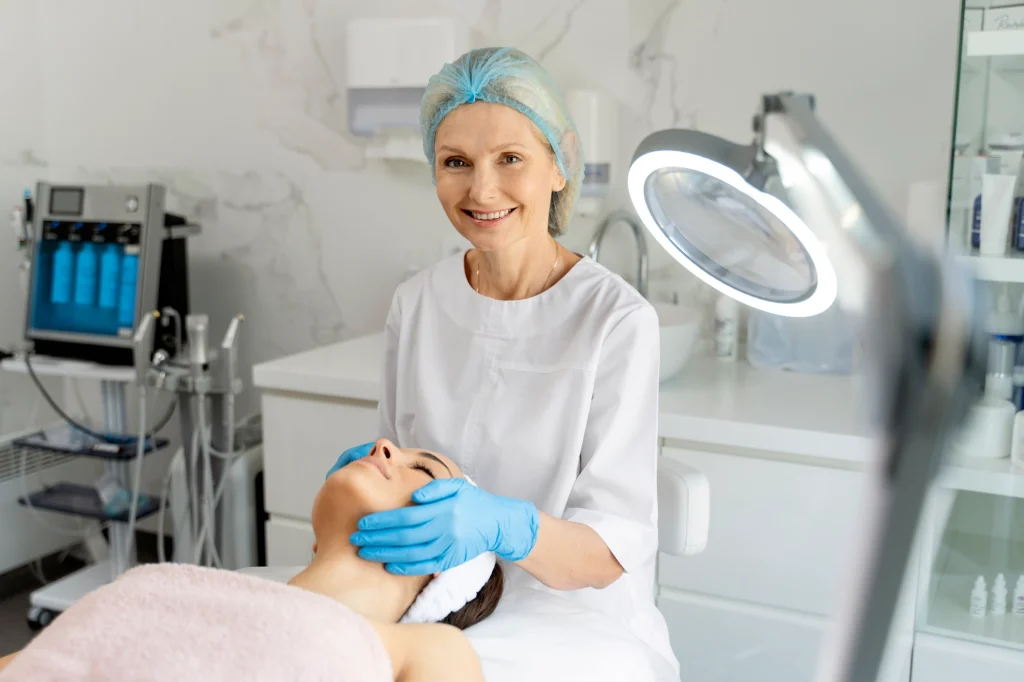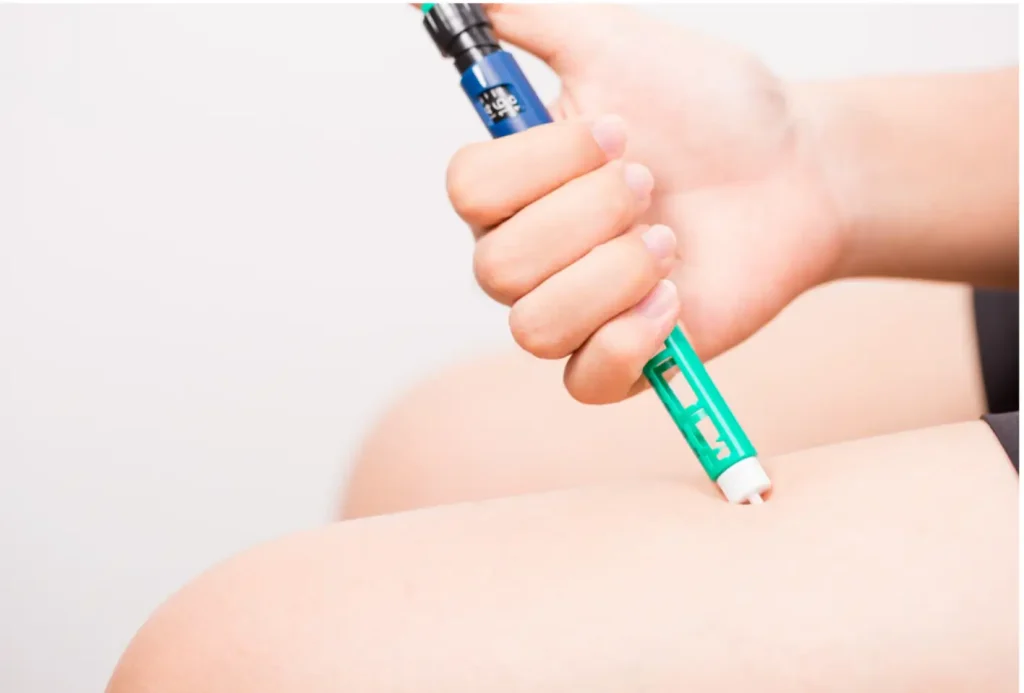A double chin, or submental fullness, is a common cosmetic concern affecting individuals regardless of age or body type. Factors like genetics, aging, and weight fluctuations often play a role, and unfortunately, this stubborn fat can be resistant to both diet and exercise.
For those looking to sculpt a more defined jawline without surgery, Belkyra offers a cutting-edge injectable treatment. It uses synthetic deoxycholic acid, a fat-dissolving compound, to target and break down fat cells beneath the chin. With noticeable improvements and minimal downtime, it’s become a popular option for non-invasive facial contouring.
This article will explore Belkyra’s treatment process, expected results, before-and-after examples, and what patients can realistically expect from their journey to a more refined profile.
Key Takeaways
- Belkyra effectively reduces submental fat, offering a non-surgical solution for achieving a more defined jawline.
- Before-and-after photos highlight real-world transformations, providing visual evidence of Belkyra’s impact on facial aesthetics.
- Results are gradual, requiring multiple sessions, but offer long-lasting improvements with proper adherence to treatment plans.
- Temporary side effects like swelling and bruising are common but manageable with recommended aftercare practices.
- Individual outcomes vary, influenced by factors such as treatment goals, practitioner expertise, and patient-specific characteristics.
About: Medical Spa RX provides medical practices with premium products at the best prices. If you’re looking to buy Belkyra (Kybella) for your practice, the sales representatives at Medical Spa RX can give you guidance.
Belkyra Before and After Photo Gallery
Many individuals considering non-surgical options often ask, “Does Belkyra work?” The following Belkyra before and after photo gallery provides compelling visual evidence of its effectiveness in reducing submental fullness (double chin).
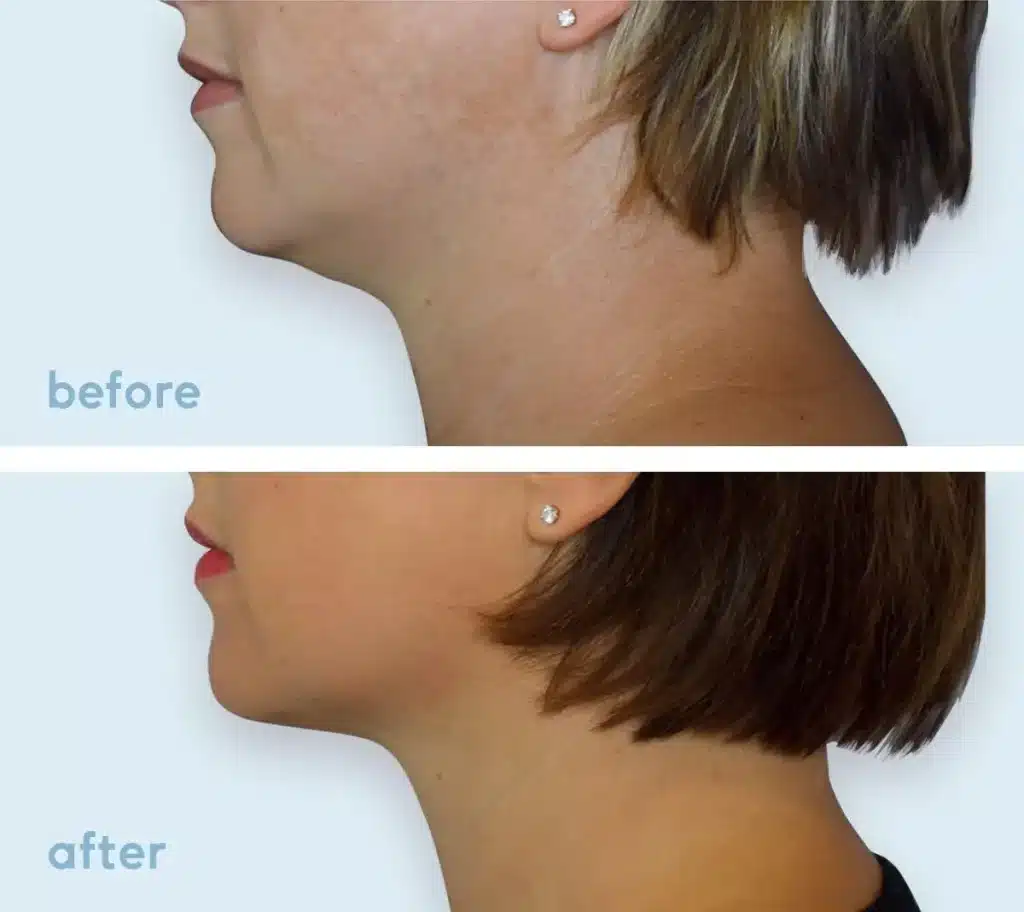
A 38-year-old woman is thrilled with the results of her Belkyra treatments. After two sessions spaced eight weeks apart, her jawline appears noticeably more contoured—without the need for surgery.
Each photo highlights real patient outcomes, demonstrating improvements in chin definition and overall facial profile. To ensure accuracy and reliability, all images are captured using standardized techniques, including consistent lighting and camera angles.
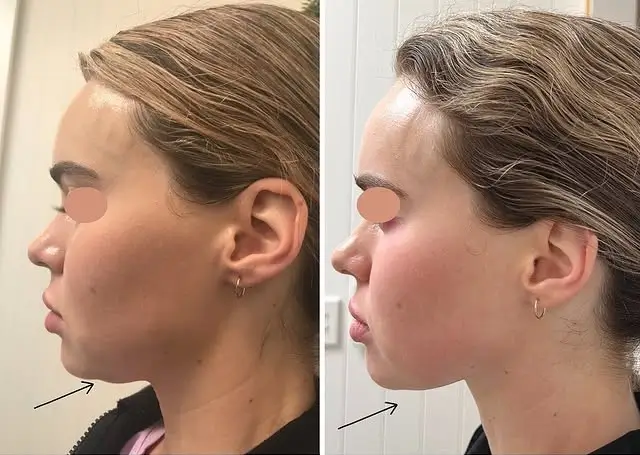
This patient, seeking a solution for stubborn chin fat, opted for Belkyra—a modern injectable that targets submental fat. The result is a sharper, more defined side profile.
While individual results may vary, these transformations provide helpful insight into the kind of gradual, natural-looking improvements that Belkyra can deliver. Viewing authentic before-and-after photos helps set realistic expectations for prospective patients.
Patient Selection and Candidacy Assessment
Careful patient selection is essential for achieving optimal Belkyra results. Not everyone is a suitable candidate, and a thorough consultation ensures both safety and satisfaction.

Key Factors for Patient Selection
- Submental Fullness: Patients with moderate to severe submental fat respond best to Belkyra.
- Skin Elasticity: Good skin elasticity ensures that the treated area will contract smoothly after fat reduction.
- Medical History: Screening for allergies or conditions that could affect healing or increase risk.
- Patient Expectations: Educating patients on gradual improvements rather than instant changes.
- Lifestyle Factors: Assessing for habits that could influence results, such as weight fluctuation.
Careful evaluation during the consultation process helps identify candidates who will benefit most, ensuring realistic outcomes and higher satisfaction.
Injection Techniques and Treatment Protocols
Administering Belkyra correctly is vital for achieving consistent results and minimizing side effects. Practitioners should follow established protocols while customizing the approach for individual patient needs.
Essential Steps in the Injection Process
- Mapping the Area: Identifying precise injection points using a grid pattern.
- Numbing and Preparation: Apply topical anesthetic to reduce discomfort.
- Injection Technique: Administering small amounts per site, maintaining equal spacing.
- Monitoring Patient Response: Watching for signs of swelling or adverse reactions.
- Post-Treatment Care: Advising patients on managing swelling and bruising.
Following a methodical approach minimizes complications and enhances consistency.
Analyzing Photographic Evidence and Patient Outcomes
Evaluating before and after photos goes beyond mere visual comparison. Practitioners should assess factors like submental fullness, symmetry, and overall skin contour to gauge treatment success accurately. Standardized photography techniques are crucial for obtaining reliable comparisons.
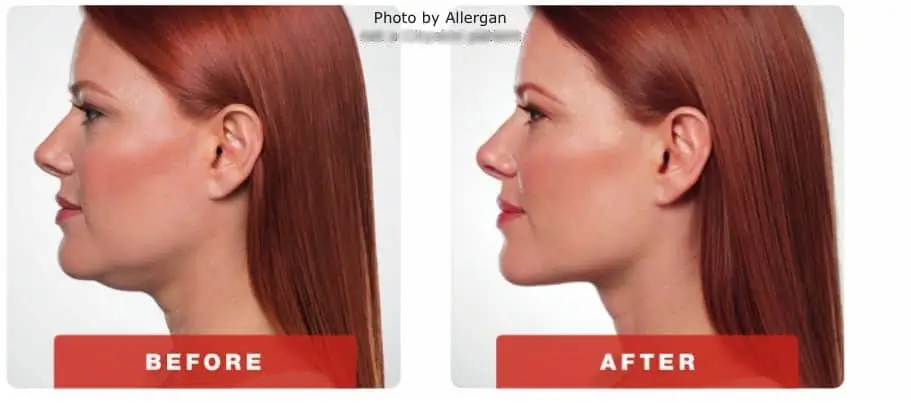
It is essential to educate patients that noticeable improvements may not be immediate, as multiple sessions are often necessary to achieve desired results. Subtle changes can gradually become more pronounced as the treatment progresses, emphasizing the need for realistic expectations and ongoing monitoring. Documenting progress helps validate treatment effectiveness.
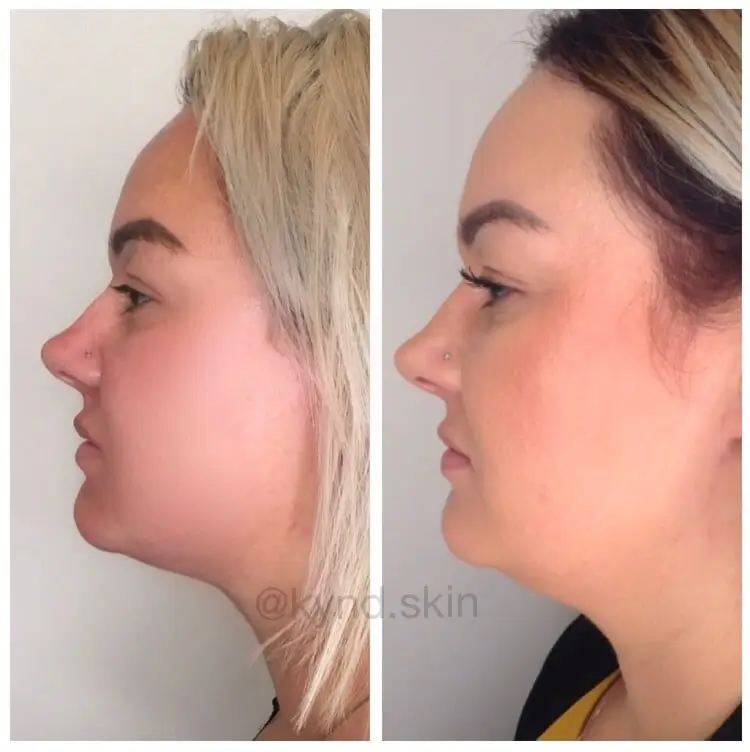
Managing Variations and Challenging Cases
While Belkyra is effective, results can vary. Some patients may experience asymmetrical fat reduction, excessive swelling, or prolonged tenderness. In these cases, open communication and proactive management are crucial.
Solutions may include:
- Adjusting injection depth or dosage in future sessions.
- Scheduling touch-up treatments.
- Offering custom aftercare tips to reduce discomfort or swelling.
Encouraging patients to report any unexpected symptoms allows providers to intervene early, fostering trust and satisfaction.
Conclusion
Belkyra is a powerful non-surgical solution for reducing double chin fat and enhancing facial contours. With proper patient selection, refined injection techniques, and clear expectation management, it can yield noticeable, natural-looking improvements.
Before-and-after photos offer visual proof of its efficacy and play a key role in guiding patient journeys. With consistent care and planning, Belkyra can deliver results that speak for themselves.
FAQs
1. How long does it take to see results after Belkyra?
Most patients notice visible improvement after 2-4 treatment sessions, spaced about a month apart.
2. Are there any side effects?
Common side effects include swelling, bruising, and numbness in the treated area. These effects are usually temporary.
3. Can Belkyra be used on other body parts?
Currently, Belkyra is FDA-approved only for submental fat reduction.
4. How many sessions are typically needed?
Patients usually require 2-6 sessions, depending on the amount of submental fat.
References
Medsafe New Zealand Data Sheet for Belkyra (Deoxycholic Acid). Published January 23, 2025. Accessed April 4, 2025. https://www.medsafe.govt.nz/profs/datasheet/b/belkyrainj.pdf
emc. Summary of Product Characteristics for Belkyra (Deoxycholic Acid). Published December 21, 2023. Accessed April 4, 2025. https://www.medicines.org.uk/emc/product/12165/smpc

